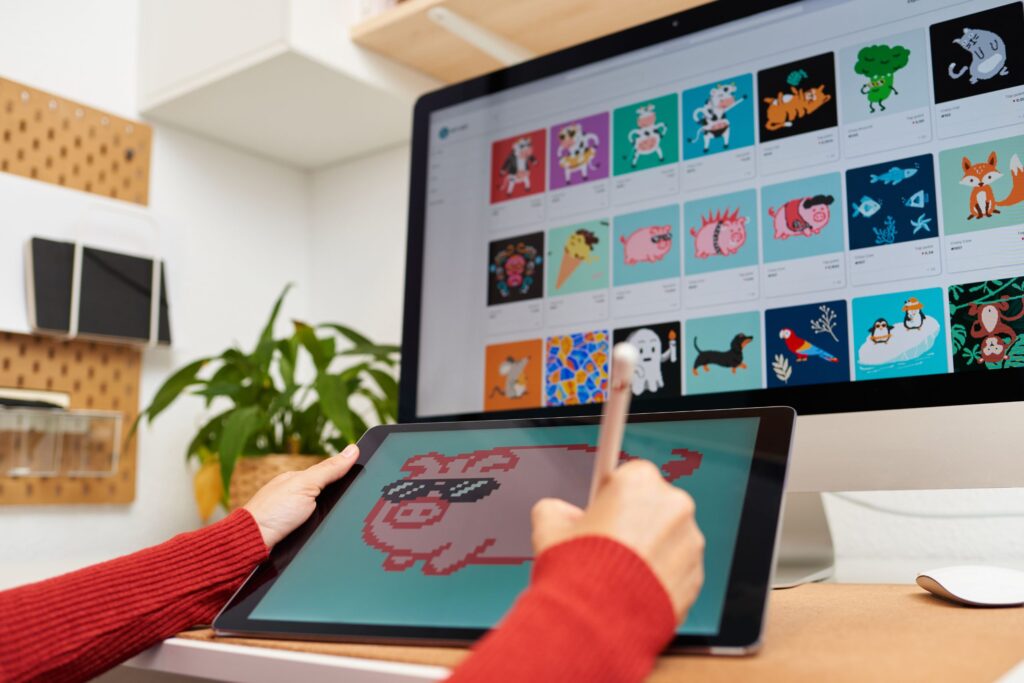The rise of NFTs, or non-fungible tokens, has revolutionized the concept of digital ownership. NFTs allow creators to tokenize digital assets, such as artwork, music, videos, and even tweets, giving them unique value and ownership on the blockchain. This innovation has opened up endless possibilities for artists, musicians, and creators to monetize their work and connect with their audience in new ways. The minting process, which involves creating and issuing an NFT, can be done by anyone with access to a compatible platform and the ability to cover the associated fees. However, the future potential of NFTs goes beyond digital collectibles, with potential applications in gaming, virtual real estate, and more. As the world embraces the concept of digital ownership, the possibilities for NFTs are limitless.
Choosing a Platform
When it comes to establishing an online presence, one of the crucial decisions a business or individual must make is choosing the right platform. With a plethora of options available, including social media, e-commerce, and content management systems, it’s important to carefully consider the unique needs and goals of your brand or project. From reaching your target audience to offering seamless user experience, the platform you choose can significantly impact your online success.
Popular Platforms for Creating and Selling NFTs
There are several popular platforms for creating and selling NFTs, with OpenSea and Rarible being two of the most widely known. These platforms offer simple and user-friendly processes for minting NFTs and browsing digital assets. Artists and creators can explore the use of digital tools to create new artwork, and these platforms provide a marketplace for buyers and collectors to own original copies of digital works.
OpenSea is one of the largest and most popular NFT marketplaces, allowing users to create, buy, and sell digital assets. It supports a wide range of digital collectibles, including art, domain names, virtual worlds, and more.
Rarible is another prominent platform that enables creators to easily mint and sell their digital artwork as NFTs. It also provides a decentralized marketplace for buyers and sellers to engage in the trading of digital assets.
These platforms have played a crucial role in revolutionizing the way artists and creators monetize their digital works, providing a space for the buying and selling of NFTs and opening up new possibilities for the art world.
Selecting the Best Platform for You
As an artist specializing in digital illustrations, selecting the right NFT platform is crucial for reaching the right audience and maximizing sales potential. Top NFT platforms for digital art include OpenSea, Rarible, and Foundation. OpenSea offers a wide range of categories such as art, domain names, and virtual worlds, making it suitable for various art styles. Its user interface is user-friendly, and the process for minting NFTs is straightforward. Rarible specializes in digital art and collectibles, and its marketplace features allow for easy buying and selling of NFTs.
Foundation, on the other hand, focuses specifically on digital art and offers a curated marketplace for creators. When selecting the best platform, it is important to consider the demand for your particular art category, the user interface of the platform, the application process for minting NFTs, and the marketplace features offered. Finding a platform that aligns with your artistic niche and offers a full-service marketplace for listing and selling NFTs is essential for maximizing exposure and sales.
Understanding Fees and Charges Involved
In the process of banking and financial transactions, various fees and charges may apply. These can include transaction fees, service charges, and penalty fees.
Transaction fees are charges applied to specific transactions, such as wire transfers, overdrafts, or foreign currency exchanges. Service charges are ongoing fees for maintaining an account or utilizing specific services, such as monthly maintenance fees or ATM usage charges. Penalty fees are incurred when an account holder fails to meet certain requirements, such as overdraft penalties, late payment fees, or account closure charges.
The circumstances under which these fees may apply can vary. Transaction fees are typically incurred when conducting specific types of transactions, while service charges are often based on the type of account or services used. Penalty fees are triggered by specific events, such as a missed payment or exceeding an account limit.
It is important for account holders to understand the breakdown of these fees and charges, as well as the circumstances under which they may apply, in order to effectively manage their finances and avoid unnecessary expenses.

Create Your Digital Assets or Content
Creating your own digital assets involves several key steps. First, you will need to create a digital file of the object or content that you want to turn into a non-fungible token (NFT). It is important to ensure that the digital file is in the correct format for NFT conversion, as this will determine its compatibility with NFT marketplaces.
Once you have your digital file ready, the next step is to create a digital wallet to store your cryptocurrency for NFT transactions. Research which cryptocurrency wallet to use, as Ethereum is a popular choice for NFT exchanges. It is crucial to have a secure and reliable digital wallet to store your cryptocurrency for purchasing and selling NFT art.
Set Up Your Wallet For Holding Cryptocurrency
1. Research and choose a suitable digital wallet that supports NFT transactions and has a user-friendly interface. Consider wallets such as MetaMask, Trust Wallet, or Coinbase Wallet.
2. Determine the cryptocurrency and blockchain mainnet used on the NFT platform you plan to use. Select a wallet that is compatible with these specifications.
3. Download and install the chosen wallet app from the official app store for your device.
4. Create a new wallet account by following the on-screen instructions, which may include setting up a secure password and backing up your wallet recovery phrase.
5. Once your wallet is set up, fund it by transferring your chosen cryptocurrency from an exchange or another wallet. Make sure to choose the correct cryptocurrency network when making the transfer to ensure compatibility with your NFT platform.
6. After funding your wallet, you can now use it to hold and manage your cryptocurrency, including for NFT transactions on your chosen platform. Remember to keep your wallet secure and regularly back up your recovery phrase in a safe place.
Minting Process – Turning Your Digital Asset Into an NFT
To turn your digital asset into an NFT, you’ll need to find a platform that supports NFT creation. Once you’ve chosen a platform, you’ll need to connect your digital wallet to the platform. This is usually done by linking your wallet address with the platform’s interface.
After your wallet is connected, you can begin the minting process by uploading your digital file. This can be an image, video, audio file, or any other digital asset that you want to turn into an NFT. Once the file is uploaded, you’ll need to follow the platform’s instructions to complete the minting process.
This may involve adding a title, description, and any other relevant information about your NFT. You may also need to set any royalties or resale rights for your NFT. Once you’ve completed all the necessary steps, the minting process will finalize and your digital asset will be transformed into an NFT.
It’s important to carefully read and follow the platform’s guidelines and terms of service to ensure a smooth and successful minting process.
Launching and Selling Your NFTs on the Marketplace
Launching and selling your NFTs on the marketplace involves several key steps. First, choosing the right platform is crucial. Platforms like OpenSea, Rarible, and Shopify offer a user-friendly interface and a large audience, making them ideal choices. Once you have selected a platform, setting a price for your NFT is important. Researching similar NFTs and considering the uniqueness and value of your art will help determine the right price.
To maximize visibility, promoting your NFT on social media and NFT directories is essential. Leveraging these platforms can help reach a wider audience and attract potential buyers. When selling your NFT, setting a minimum price and determining royalties ensures that you are adequately compensated for your work, even if it is resold in the future.
The benefits of using platforms like OpenSea, Rarible, and Shopify include access to a large audience, easy-to-use interface, and built-in tools for managing your NFTs. These platforms also offer the ability to customize your storefront and provide analytics to track your sales.

Conclusion
In conclusion, creating and selling NFTs is an exciting new way to monetize your art. It’s a great way to get exposure for your work, as well as generate passive income. With the right knowledge and resources you can create and sell NFTs with ease. All you need to do now is get started!
Creating and selling NFTs is a powerful way to make money from your art and creativity. By following the steps outlined in this guide, you can be on your way to becoming an NFT creator and seller. Remember to keep track of the latest developments in the NFT space, stay up-to-date with legal requirements, and seek help when needed. Good luck on your journey!

